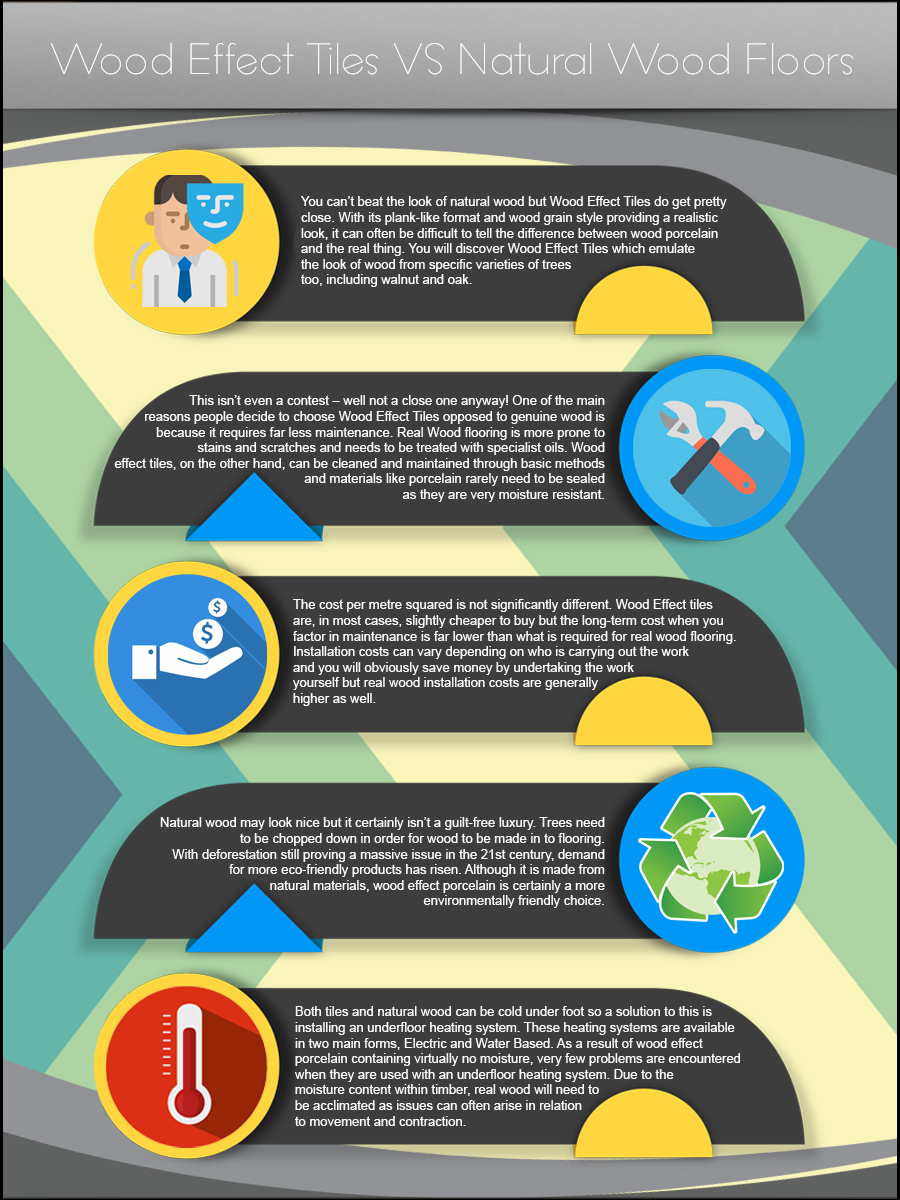Cookie
This website requires cookies to provide all of its features. For more information on what data is contained in the cookies, please see our Privacy Policy page. To accept cookies from this site, please click the Accept button below.

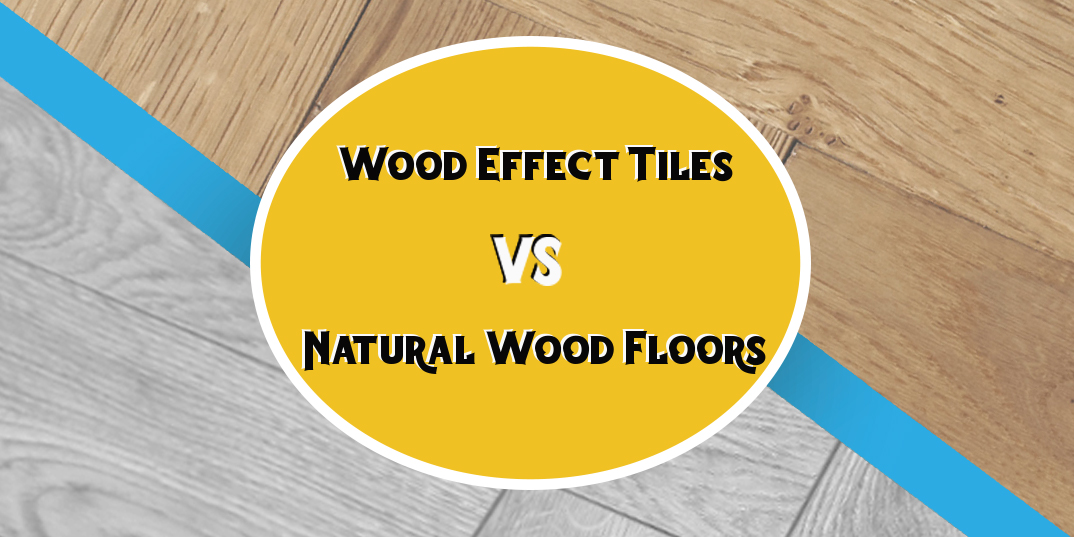
With its timeless beauty, personified by neutral colours and a rustic-grain style, it is no surprise that wood flooring is many people’s first option when it comes to choosing a new design. This natural theme will provide your home with a unique character and charm but real wood flooring can also have some downsides too. The good news is that if you still dream of a wood floor but have nightmares when it comes to its practicality, wood effect tiles are available as a reliable alternative. Here, we are going to take a look at the pros and cons when it comes to both genuine wood flooring and engineered wood effect tiles.
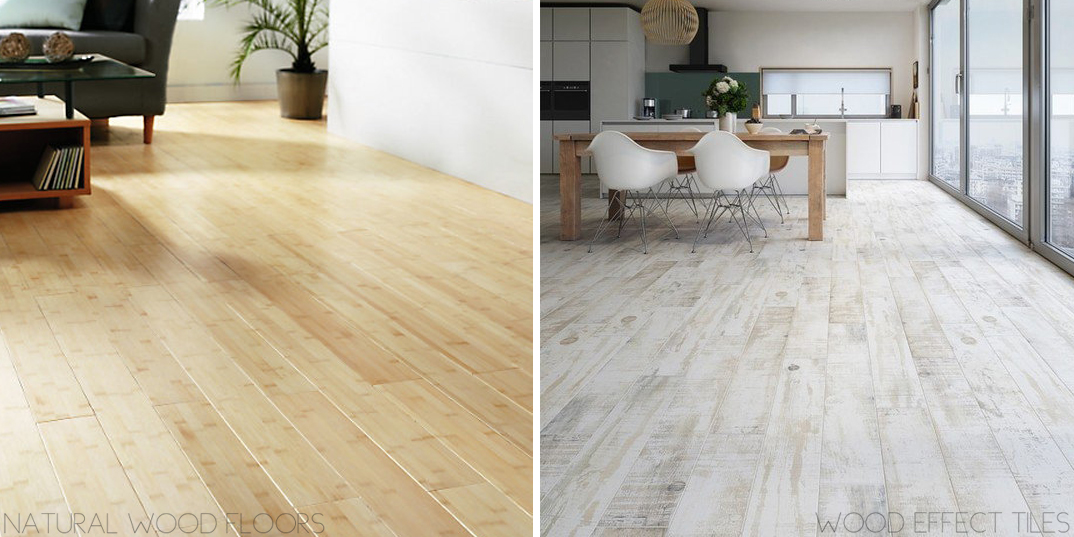

Real wood floors offer a truly unique appearance which can transform interior spaces. The classic knotted and veined inclusions are two of its most distinctive features and make this one of the most sought after options for floor areas. It is a much-loved material for hallways and living areas and can be applied throughout homes as part of open plan layouts. As a result of it being a natural material, shades can vary from plank to plank and this only enhances the charm of real wood further. Real wood flooring is usually arranged on floors in what is known as a running bond pattern but is also well suited to a herringbone formation. The variety of wood you choose will depend on the shade you prefer, for example for a lighter floor you will probably select something like oak whereas if you want a darker floor design then walnut is a more suitable option.
High quality engineered wood effect tiles have a very realistic appearance. In fact, it can be so realistic that it can be difficult to tell the difference between tiles and a genuine wood floor. Manufacturers have created this classic wood style by including all the features of genuine wood flooring within the design. You will therefore notice the trademark knotted and veined patterns of real wood within wood effect tiles. Real wood floor colours are limited to the varieties of natural trees available but in contrast wood effect tiles can be acquired in a vast array of shades. Not only can you buy wood effect tiles in a traditional matt or satin finish but also a polished surface. It is not just the look of wood effect tiles which bear a resemblance to the real thing but also the plank format as these products are generally manufactured in 900x200mm or 900x150mm sizes.
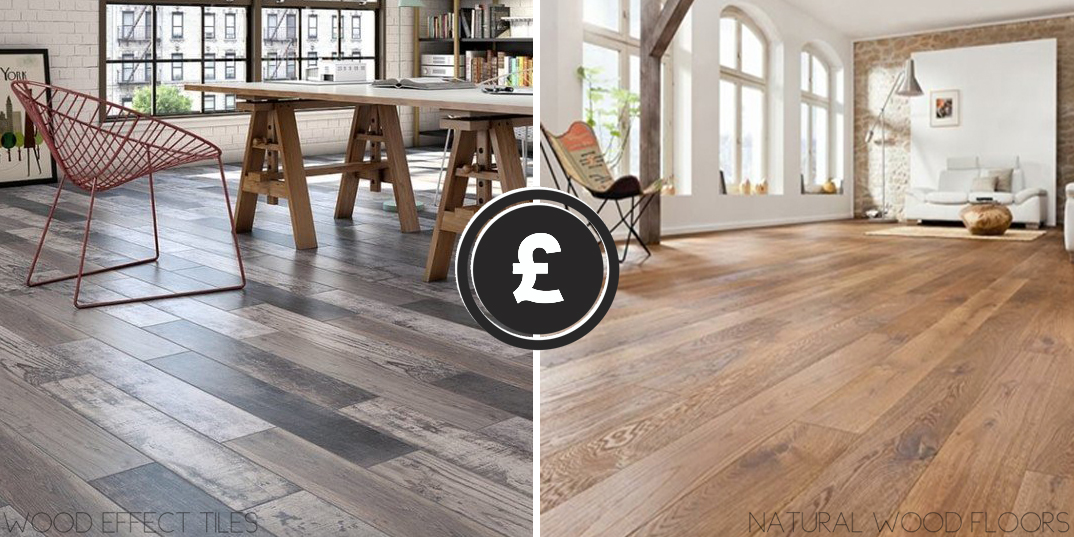

The initial cost of purchasing real wood flooring and wood effect tiles can be fairly similar although tiles tend to be slightly cheaper. It is not until you get in to the nitty-gritty of installation and maintenance when you realise real wood flooring is a lot more expensive. You can generally purchase wood effect tiles for slightly less per metre squared than genuine wood flooring and if you decide to carry out the installation yourself the initial project will amount to around the same cost. However, most people tend to leave installation to the professional and this particularly true when it comes to real wood floors.
The long term maintenance of real wood flooring will cost a lot more than that of wood effect tiles. There are specialist products which are required in order to treat the wood including oils. You will also need to be very careful when it comes to which products you use when cleaning your wood floor during general maintenance in order to prevent scratching or staining the surface of the floor. If you feel your wood floor is looking really tired and worn then you may decide to sand and varnish it and for this you could either purchase the tools and products for the job itself or call in the professionals. Wood effect tiles, on the other-hand, require very little maintenance besides general dust removal and basic cleaning.
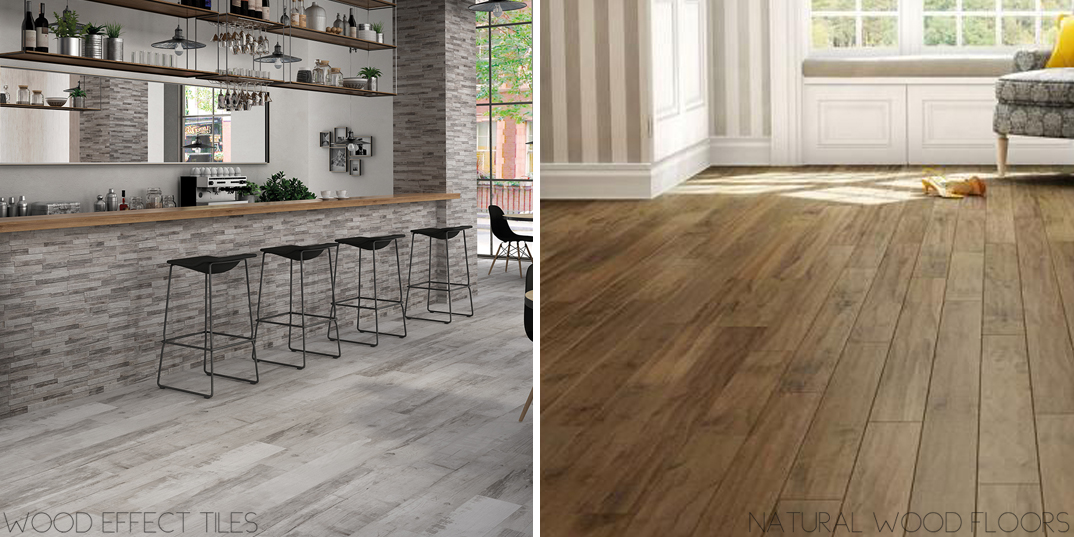

One of the biggest advantages a porcelain tile has over real wood is its impermeable nature. Porcelain has an incredibly low moisture absorption rate and is therefore very resilient to staining and damage from water and other liquids. In contrast, one of the big problems with natural wood is its ability to absorb moisture which can lead to staining, warping, shrinkage and/or expansion. So if you are looking to choose one of these materials for your home, particularly your kitchen or bathroom, it is worth considering these factors before making a decision.
Another big issue with wood flooring is the ease at which it can scratch; this can be a nightmare if you have kids and pets running around. Scratches on hardwood floors have a habit of running quite deep in to the surface of the wood, this can be the case with scratches caused by dog claws and the movement of heavy furniture, and may require for the floor to be sanded and refinished. Now, it would be foolish to suggest that tiles are completely resilient to scratches but it takes a lot more for hardwearing materials like porcelain to become damaged from scratches in the same way as real wood floors. One thing you should always do when purchasing tiles is to buy more than the amount you require so you can replace damaged or broken tiles later on down the line. This means if one or even a few of your porcelain tiles are badly scratched then you can simply remove and replace them for the cost of a small amount of adhesive or grout.
One of the big disadvantages of tiles is that they can be cold underfoot but this can be solved with the introduction of adequate under-floor heating. The best option for wood effect tiles are modern electric under-floor heating mats which are discreet and can simply be laid upon the underlying substrate prior to tiling. This type of under-floor heating is also easy to control with a thermostat. Under-floor heating systems are not recommended to be used with solid wood flooring as the fluctuations in temperature can severely damage the floor. Engineered hardwood flooring can be used with under-floor heating though as it has a great level of stability due to its base layers.


The environment and how we treat our planet is a big issue in the world today. It is also important that we look forward and ensure that we protect Earth for future generations to enjoy. The problem with real wood is that trees need to be chopped down in order for it to become a flooring option. Deforestation is a major problem and leads to the destruction of natural habitats for a variety of species and also speeds up the process of climate change as trees turn carbon dioxide in to oxygen. Although we are not suggesting that manufacturing porcelain tiles is completely eco-friendly but it certainly does less harm to the environment than the process which creates real wood flooring.
